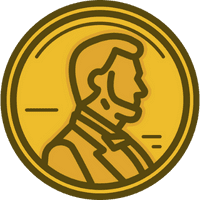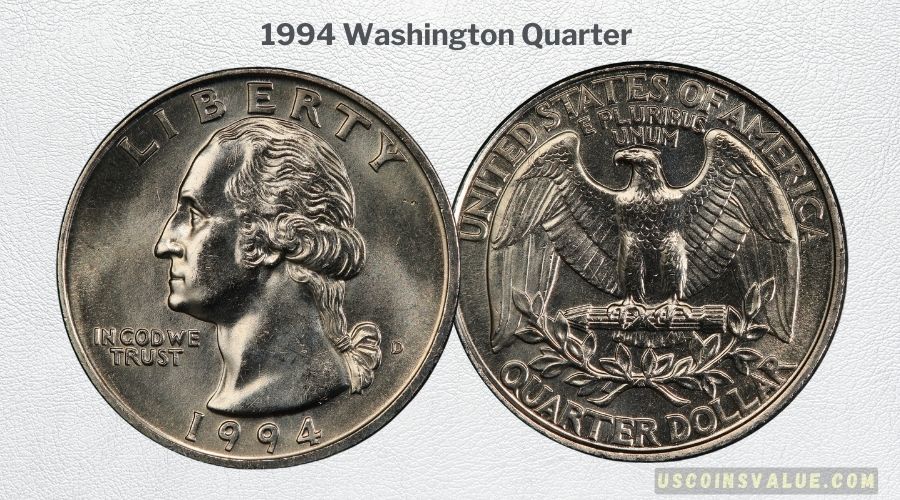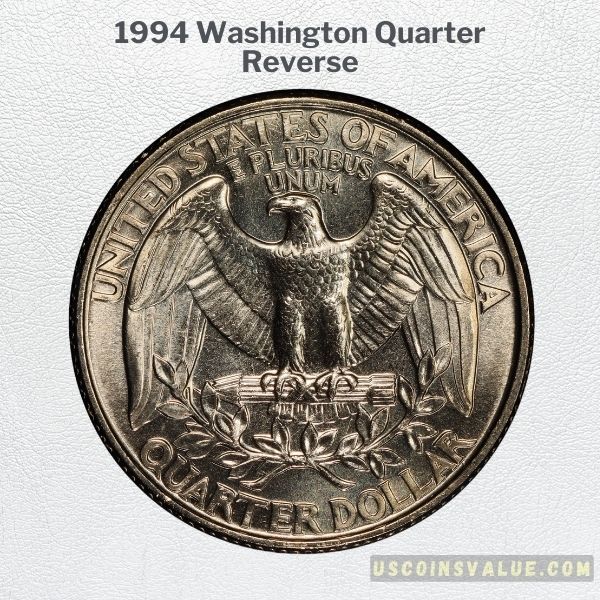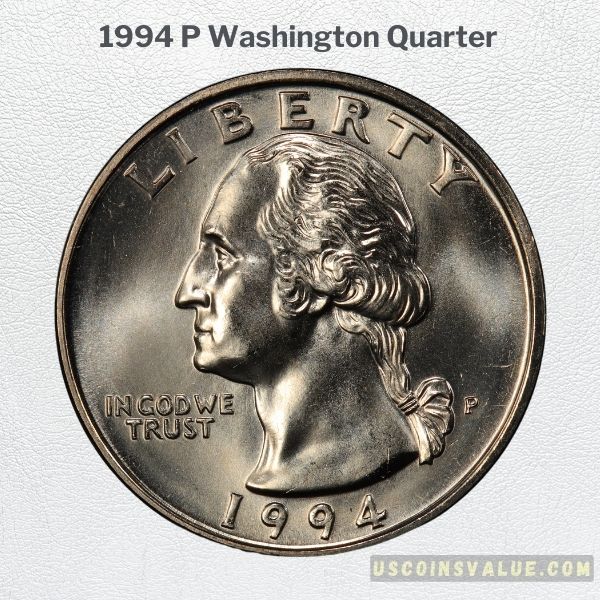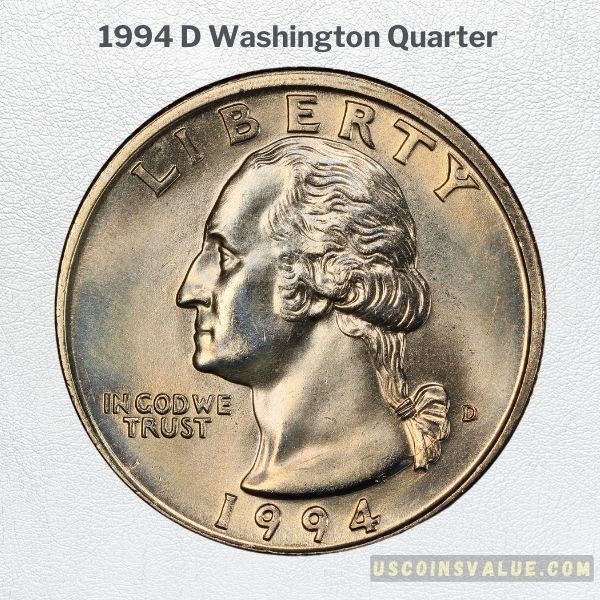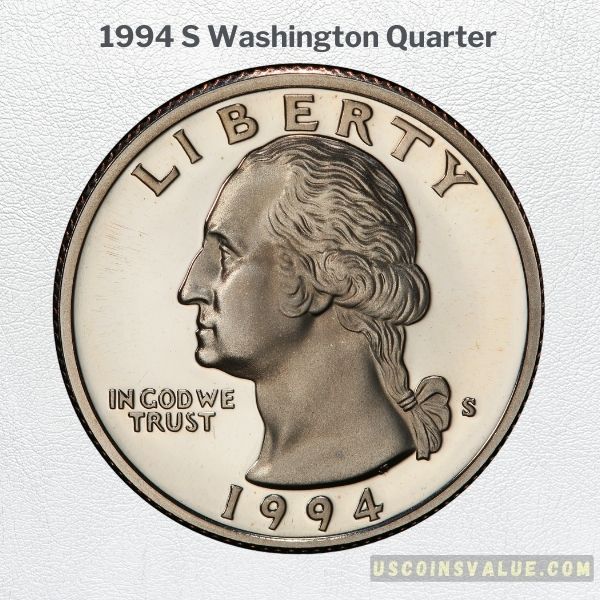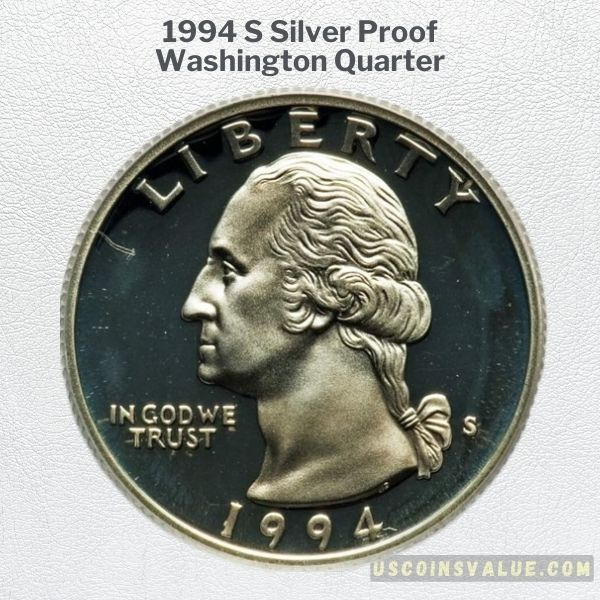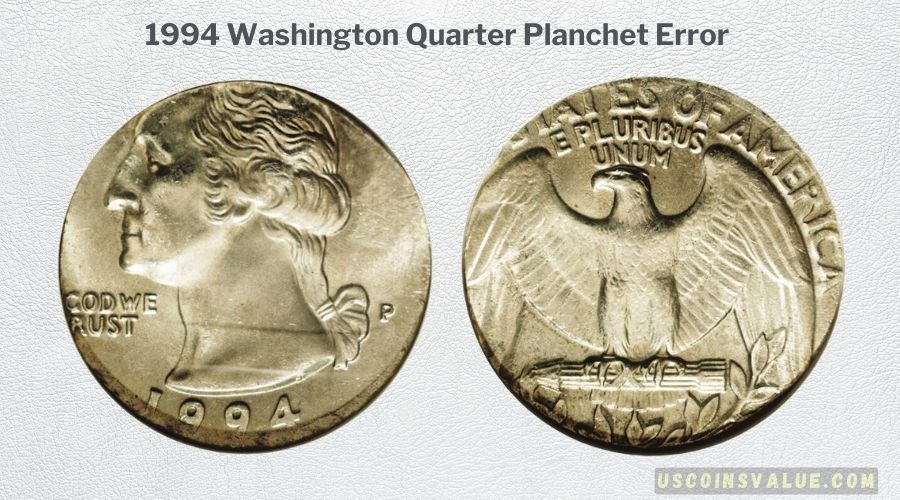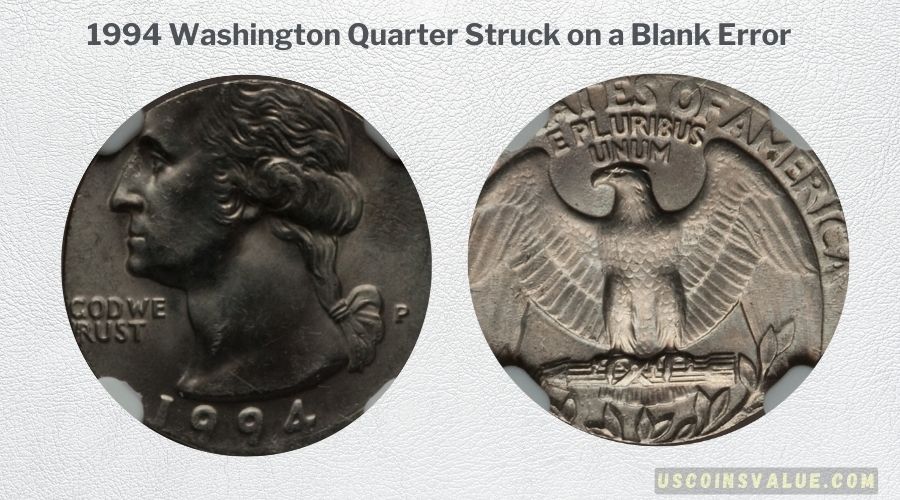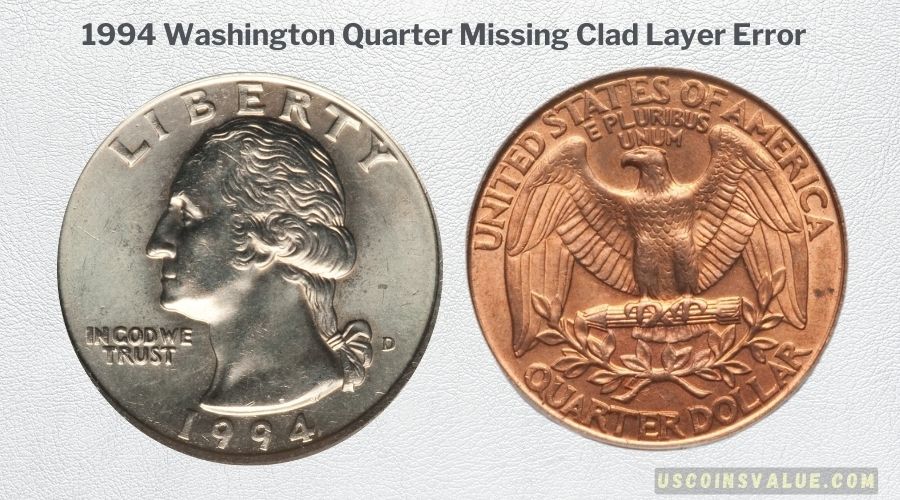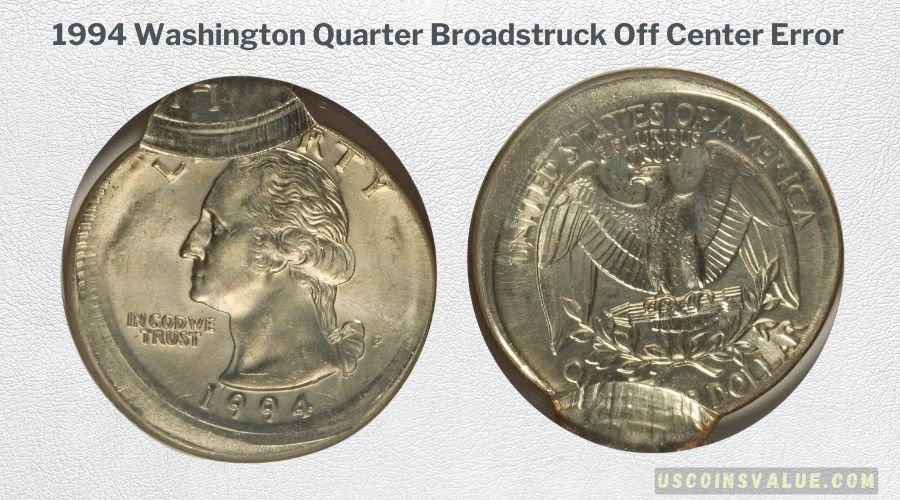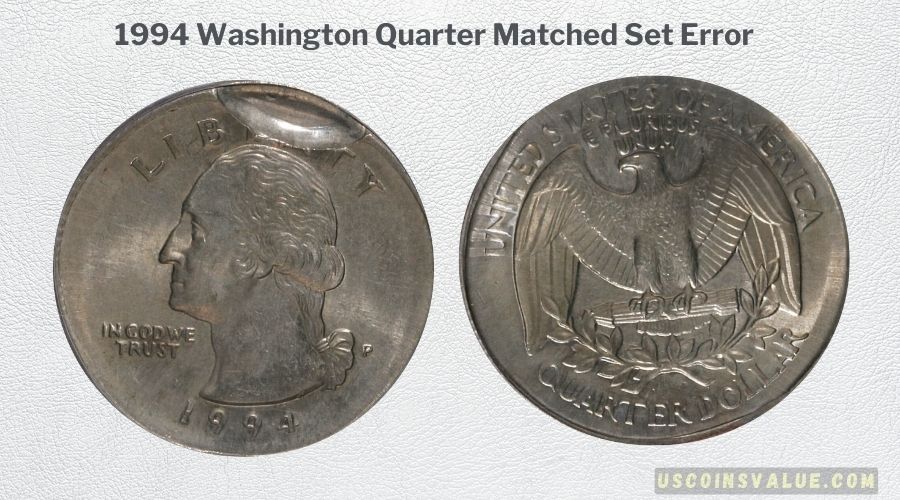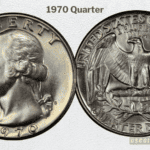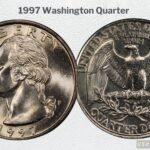As a numismatic fanatic, you must be intrigued by the 1994 Washington quarter. If you have one or more at home, then you’re wondering if it’ll be worth some dollars in today’s economy. The answer is YES.
Despite being almost 30 years old, the 1994 Washington Quarter can fetch you up to $1,000 if it’s in stellar MS69 – 70 condition, according to numismatic collection authorities like USA Coin Book and PCGS.
Here’s everything you need to know before collecting the 1994 quarter.
What is the Background of the 1994 Washington Quarter?
Washington Quarters first existed in 1932 as a tribute to George T. Washington, the first American President. It was supposed to be a 200th-year celebration on-off designed by John Flanagan, but it gained popularity.
After replacing the Standing Lady Liberty, the Washington Quarter lasted until the late-1990s. The 1994 quarter is valuable because it’s one of the last Washington quarters minted in America.
History has it that the 1994 quarter became popular because it was easier to mint than the former standing liberty coin.
J. Flanagan used Jean Antoine’s 1786 sculpting of Washington’s head for the obverse and used the American bald eagle emblem for the reverse. The coin’s composition included 91.67% copper and 8.33% nickel forged into a reeded edge 24.3mm circle weighing 5.67g.
Flanagan still honored Lady Liberty by keeping the “LIBERTY” inscription on the obverse.
The Washington quarters lasted until 1998.
The 1994 Washington Quarter Features
- Series: Washington Quarters
- Year of Make: 1994
- Mintage: 825,600,000
- Mint Branch: Philadelphia, Denver, San Francisco
- Composition: Copper 91.67%, Nickel 8.33% & Silver 90%
- Weight: 5.67 grams
- Diameter: 24.3 mm
- Thickness: 1.75mm
- Edge: Reeded
Obverse & Reverse Design: What Does the 1994 Washington Quarter Look Like?
Obverse and reverse in coin language refers to heads and tails, a.k.a. The top and bottom. It contains details from the manufacturing date to the mint marks and tribute phrases.
The Obverse has a bold engraving of George T. Washington’s head in a side profile facing the left. He ties his hair by the nape of the neck with a ribbon. Other features include:
- LIBERTY: “LIBERTY” is on the crown of his head.
- IN GOD WE TRUST: Beneath his chin, you’ll read, “IN GOD WE TRUST.”
- 1997: Boldly engraved under the portrait and “IN GOD WE TRUST.”
- MINT MARK: You’ll see “P”, “D”, or “S” representing the minting facility’s location.
On the reverse, there’s an emblem of the American bald eagle. It has large spread wings with the bottom tip connecting to the olive branches beneath its horizontal pole. Other details include:
- QUARTER DOLLAR: Underneath the olive branches, there’s a bold engraving of “QUARTER DOLLAR”
- UNITED STATES OF AMERICA: The top center has “UNITED STATES OF AMERICA.”
- E PLURIBUS UNUM: A smaller “E PLURIBUS UNUM” is placed under the country’s name. It’s one of the US mantras meaning “Out of Many, One.”
What are The 1994 Quarter Varieties?
If you’ve seen different colors and designs in the 1994 quarter, then you’re most likely wondering how many varieties you can find. The 1994 quarter has four types based on the coin’s mintage origin.
As of 1994, there were three minting factories across America:
| 1997 (Washington) Quarter Varieties | Composition | Mint Location | Mintage |
| 1994-P (Regular Strike) | 75% copper and 25% nickel over a pure copper center | Philadelphia | 825,600,000 |
| 1994-D (Regular Strike) | 75% copper and 25% nickel over a pure copper center | Denver | 880,034,110 |
| 1994-S (Proof Strike) | 75% copper and 25% nickel over a pure copper center | San Francisco | 2,484,594 |
| 1994-S Silver (Proof Strike) | 90% silver and 10% copper | San Francisco | 785,329 |
The most unique variant of the 1994 quarter is the S Silver Proof. It’s also the rarest because it was the least minted, with 785,329 pieces. This coin is of San Francisco origin and has a different composition from the rest.
It’s made of 90% silver and 10% copper, which weighs 6.25g. Apart from the composition differences, it looks like the 1994-S coin with its black and silver colors and serrated edge. It also has an “S” on the obverse beside the nape of Washington’s ponytail.
What’s the Current Value of the 1994 Quarter?
Not all the 1994 quarters are valuable, but pieces with rare compositions and marks are worth some dollars in today’s market.
Other factors that make 1994 quarters notable include the condition. It’s possible to have a piece with faded features leading to poor aesthetics and market value depreciation. You can measure this value on a scale of 1 – 70, with 1 being the poorest and 70 being pristine.
Here’s a table showing this breakdown before we dive into the details of valuable 1994 Quarters.
| 1994 Quarters Grades | 1994-P | 1994-D | 1994-S | 1994-Silver Proof |
| 60 | $1.50 | $1.50 | $4 | N/A |
| 61 | $2.50 | $2.50 | $5 | $9 |
| 62 | $3.50 | $3.50 | $5 | $10 |
| 63 | $5 | $5 | $6 | $11 |
| 64 | $7.50 | $7.50 | $7 | $12 |
| 65 | $10 | $12.50 | $8 | $13 |
| 66 | $40 | $70 | $9 | N/A |
| 67 | $290 | $750 | $10 | N/A |
| 68 | $2,500 | N/A | $11 – $12 | N/A |
| 69 | $4,000 | $1,500 | $17 | $80 |
This table drew references from PCGS, NGC Coin, and USA Coin Book. PR means Proof.
Although this chart and article only address 1994 quarters with a quality of 60 – 69, note that the scale ranges from 1 – 70. MS are uncirculated coins, meaning they’ve never been spent publicly. 1994-S coins are rated PR for Proof.
1. 1994-P Quarter Value
You can trade your 1994-P Quarter for less than $1 at $0.30 – $0.85 if it’s in average condition per the NGC Price Guide. But a high-quality Washington Quarter in pristine condition is worth almost $800.
Although PCGS says you can earn as much as $4,000 on a 1994-P Washington Quarter in MS68 condition, the auction record for this coin stands at $864 by Heritage auctions in 2006. You’ll also find that the highest price in recent years sits at $504.
| Grade | Highest Price & Sale Date | Firm |
| MS63 | $864 (2006) | Heritage Auctions |
| MS66 | $129 (2007) | Heritage Auctions |
| MS63 | $150 (2000) | Heritage Auctions |
2. 1994-D Quarter Value
A regular 1994-D quarter will fetch you $1 at most unless it’s valued at MS61 or more. A regular MS60 or less valued 1994-D Quarter will make you $1 at most. Per USA Coin Book, an uncirculated Washington quarter is worth $11+.
They’re highly sought after because Denver minted over 880 million 1994-D coins. You’d think its value will depreciate because of its excess supply, but that’s not the case. Instead, many of the highest sold 1994 quarters have the “D” mint mark.
The Denver minted 1994-D quarter has an auction record of $1500, this sale was made on eBay in 2018. The table below shows some other high prices the 1994-D quarter has gone for.
| Grade | Highest Price & Sale Date | Firm |
| MS66 | $128 (2007) | Heritage Auctions |
| MS66 | $123 (2014) | Heritage Auctions |
| MS67 | $999 (2017) | Heritage Auctions |
3. 1994-S Quarter Value
The 1994-S coins have a unique black and silver or painted silver color. The USA Coin Book says the 1994-S Silver Proof coin can fetch you at least $4.63. It’s more common than the silver proof variant because San Francisco minted almost 2.5 million pieces.
You’ll see that it fetches the least amount in today’s economy compared to the other varieties.
Although the Professional Coin grading service states that this quarter has an auction record of $308, the most recent highest sale prices sits at $28.
| Grade | Highest Price & Sale Date | Firm |
| PR70 | $308.2 (2004) | Heritage Auctions |
| PR70 | $218.5 (2009) | Heritage Auctions |
| PR70 | $184 (2005) | Heritage Auctions |
4. 1994-S Silver Proof Quarter Value
The 1994-S Silver Proof coin is almost pure silver save for the 10% copper in its composition. That makes it heavier than the other varieties.
You’ll notice that 1994-S Silver Proof quarters are more valuable than regular 1994-S quarters. They’re rarer because of their limited mintage compared to the 1994-S coins. The San Francisco mintage produced only 785,329 silver-proof coins.
According to PCGS, this coin sold for a record price of $863 in 2007, however, recently in 2016, a 1994-S silver proof Washington quarter sold for $79.
Here’s a table showing other high prices this quarter has been sold for.
| Grade | Highest Price & Sale Date | Firm |
| PR70 | $353 (2012) | Heritage Auctions |
| PR70 | $403 (2005) | Heritage Auctions |
| PR70 | $248 (2007) | Heritage Auctions |
Note that the coins all have official certifications from reputable companies like Professional Coin Grading Service (PCGS), and Numismatic Guaranty Company (NGC). That’s the only way you can protect yourself from fraudulent sellers.
Common Errors You’ll Find in the 1994 Quarter
Another set of 1994 quarters that’ll fetch you some dollars are those with rare errors. They’re not many, which makes them all the more valuable to coin collectors worldwide. Errors often come from production materials during mintage.
Common errors you’ll find in the 1994 quarter include:
- Wrong Planchet
- Missing Clad Layer
- Off-Center Strike
- Struck on Blank
- Matched Set
Let’s talk about some of these popular errors and a few pieces sold this century;
1. Planchet Error
When a 1994 quarter is struck on the wrong planchet, it creates disproportionate engravings. This makes some important details veer off the coin’s diameter.
Instead, you can see the engravings are bolder than the coin’s diameter, causing most of the upper part to disappear, including part of Washington’s head. Sometimes, the manufacturer uses the planchet for another coin value, which often has different compositions.
Some examples include;
- A 1994-P Quarter Struck on a Dime Planchet that sold for $863.65 in 2006.
- An MS64 1994-P Struck on a 10C Planchet sold last year for $504.
- In 2015, another 1994-P Quarter Struck on 10C Planchet fetched $329.
2. Struck on a Blank Error
If a blank gets stuck during mintage, the strike hits it instead of the coin, causing the engravings to appear on the wrong composition. Sometimes, the blank used is mismatched to the coin intended. We’ll explain.
A mintage can strike a Washington quarter on a penny blank. In that case, the coin comes out smaller and with odd compositions than normal. Here’s an example:
- This MS62 1994-P quarter struck on dime blank sold for $399.50 at auction.
3. Missing Clad Layer
A missing clad layer error happens because of irregular bonding of the component’s core and the coin.
There should be a copper layer over the nickel quarter on both sides for the 1994-D, 1994-S, and 1994-P variants. But with this error, one side misses a clad composition causing the coin to have two different faces.
So, it’ll look like a regular Washington quarter on one side, but the other is similar to a penny. Missing clad coins sold in the past include:
- A 1994-D Reverse Clad Layer Missing MS64 coin sold for $211.50 in 2014.
- Because of its average AU58 quality, this 1994 Missing Obverse Clad Layer sold for less than $70 this year.
4. Broadstruck Off Center Error
In rare cases, planchets shift during production, causing the strike to land off-center. Each 1994 quarter requires two strikes for a complete engravement, but this error comes from a failed second strike.
You’ll notice details off-center like the word “LIBERTY” above Washington’s head missing. Or the lower part of the coin’s front has a blank space because the “1994” moved up. On the reverse, you could see parts of the bald eagle or the words missing like on the obverse.
Off-center error 1994 coins sold recently include:
- This 1994-P Broadstruk with Second Strike Off Center coin fetched $126.50 at auction.
- This 1994-D Struck 20% off-center had a quality of MS62 and sold for $101.
5. Matched Set Error
Matched set errors occur when two different 1994 quarters merge on one planchet. The coin then has two compositions and different values thus increasing the overall worth. The bottom part of the obverse has some inscriptions missing and a dent on its diameter.
Also, they don’t have the same value as one part is MS63 and the other is MS64.
- In 2008, a matched set sold for As a two-in-one rare piece, these 1994 coins sold for $1,610 at auction in 2008.
Final Thoughts
Although we couldn’t address all the errors listed in the table above, this guide covered some grounds. You can check Heritage Auctions for daily updates on the 1994 quarter value and valuable errors.
Meanwhile, PCGS updated the value of the 1994 silver quarter to $23.05. Although there’s no guarantee that the resale value will always rise, now’s a good time to trade your coins.
You can also wait and see if it’ll increase further within the next few months.
